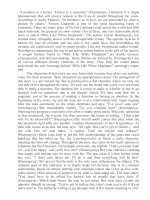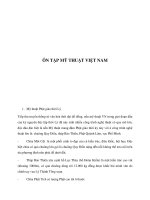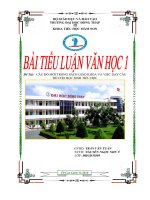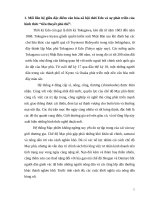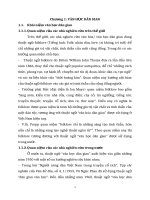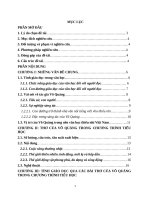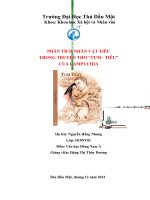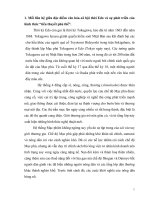Tiểu luận Văn học Mỹ
Bạn đang xem bản rút gọn của tài liệu. Xem và tải ngay bản đầy đủ của tài liệu tại đây (382.31 KB, 3 trang )
HUE UNIVERSITY
INFORMATICS AND OPEN INSTITUTE
Họ tên: HỒ THỊ TRANG
Mã sinh viên: 7052900541
Ngày sinh: 21/04/1996
AMERICAN LITERATURE 1&2
Part 1. Write a short professional bio data about your profession,
responsibilities, education, interests, and current work (no more than 150
words).
‘’My name is Hồ Thị Trang. I have been working at NgheAn Oncology
Hospital as a Radiation Oncologist since 2020. I am responsible for examining,
radiation therapy planning and treatment for patients. I graduated from Hue
Medical University with the degree of doctor of medicine since 2020. During my
studies, I was studied at major regional hospitals with high professional
qualifications. Reading book has been a hobby of mine since I was a child. I still
reading book almost every day as it helps reduce stress and discover more new
things. My current goal is to update more new knowledge about medicine for
cancer patients. This is a goal that I am passionate about for the benefit of future
patients.’’
Part 2. Choose one of these questions which are given in the task and answer
it in a 300-words essay W
" hat are the similarities and differences between imagery
and symbolism as literary devices? Use “I Heard a Fly buzz when I died” by
Emily Dickinson to illustrate your viewpoint."
Imagery and symbolism are two literary devices that are often used by
authors to convey deeper meanings and messages in their works. While they share
some similarities, they also have distinct differences that set them apart.
Imagery refers to the use of descriptive language to create vivid sensory
experiences for the reader. It involves the use of words and phrases that appeal to
the senses, such as sight, sound, touch, taste, and smell. Imagery is used to create a
mental picture of the setting, characters, and events in a story. It helps to create a
more immersive reading experience for the reader.
Symbolism, on the other hand, involves the use of objects, characters, or
actions that represent abstract ideas or concepts. Symbols are used to convey
deeper meanings and messages in a story, often in a subtle and indirect way. They
can be interpreted in different ways depending on the reader's perspective and
understanding.
In Emily Dickinson's poem "I Heard a Fly buzz when I died," both imagery
and symbolism are used to convey the theme of death. The imagery in the poem is
used to create a vivid picture of the speaker's deathbed scene. The opening line, "I
heard a Fly buzz – when I died," creates a sense of realism and sets the tone for the
rest of the poem. The buzzing of the fly is a sensory detail that helps to create a
vivid image of the scene.
The use of symbolism in the poem is also evident. The fly can be interpreted
as a symbol of death or the devil. Its buzzing represents the final moments of the
speaker's life. The "Windows" mentioned in the poem can be seen as a symbol of
the speaker's eyes or soul, which are closing at the end of life. The "Heft"
mentioned in the poem can be interpreted as a symbol of the weight of death,
which is descending upon the speaker.
In conclusion, both imagery and symbolism are important literary devices
that are used by authors to convey deeper meanings and messages in their works.
While imagery creates a sensory experience for the reader, symbolism uses objects,
characters, or actions to represent abstract ideas or concepts. In the poem "I Heard
a Fly buzz when I died," Emily Dickinson uses both imagery and symbolism to
convey the theme of death in a powerful and evocative way.

